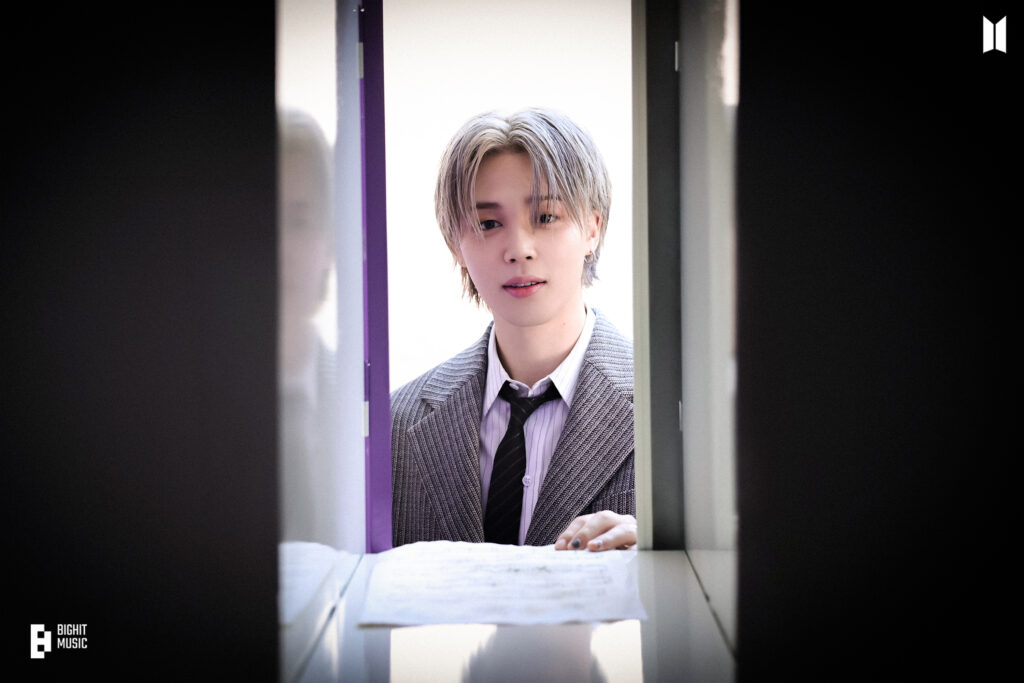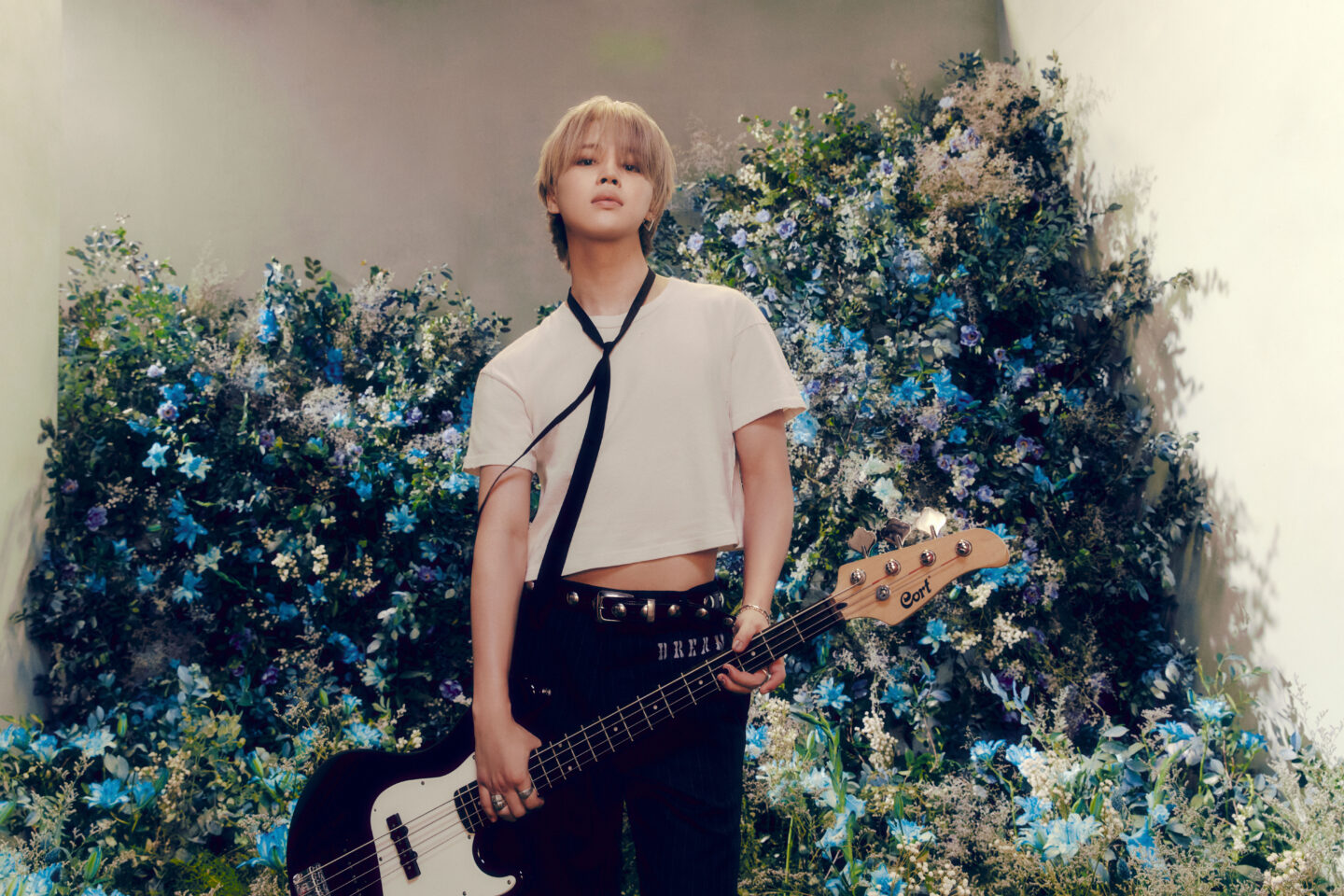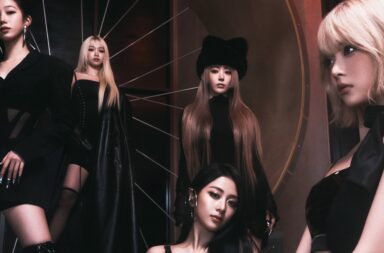
Going into this era of BTS members’ solo projects, it was most difficult to predict Jimin’s artistic direction. He is capable of expressing anguish (“Lie”), soft romanticism (“Serendipity”) and sincerity and vulnerability (“Promise”). “Set Me Free, Pt. 2” revealed an aggression never before seen in Jimin’s music, while the dreamy soundscape of “Like Crazy” belied its fundamental loneliness. As the alluring “Filter” poses, “Which me do you want?”
With his second album Muse, Jimin continues to expand our notions of his artistry. In contrast to his debut EP Face, with its angry, but ultimately cathartic exploration of his personal struggles, Muse comes from a less introspective, but much more settled place. On this album, Jimin highlights various facets of himself that are both new and familiar. Fan song “Closer Than This,” for example, exemplifies Jimin’s sweet and earnest side, while title track “Who” confidently showcases his pop star potential with its catchy melodies, nostalgic early 2000s pop/R&B instrumentation, and clean choreography.
In a discussion with RM about his album, Jimin insisted that Muse is not a continuation of Face, but it is difficult not to see Muse as a Face’s brighter counterpoint. The beginning of the album in particular offers multiple parallels to its predecessor, including interludes as the second tracks. “Interlude: Showtime” recalls the carnivalesque opening notes of Face’s first song, “Face-Off”. This time, however, Jimin revels in the joy of a carnival rather than dwelling on the “circus” where he has been made the fool.
The interlude transitions right into the whimsical pre-release single “Smeraldo Garden Marching Band,” which features rapper Loco. The title is a reference to a flower in BTS’ lore, mentioned most prominently in “The Truth Untold” from Love Yourself: Tear. Unlike the speaker in that B-side, who hides his feelings out of a sense of inadequacy, Jimin’s band leader promises, “Let’s be a little more honest.” Bright and bouncy, “Smeraldo Garden Marching Band” is at its best at its most jubilant moments, like Jimin’s high notes in the bridge and the triumphant brass outro.
Both the song and MV for “Smeraldo” pay homage to The Beatles’ Sgt. Pepper’s Lonely Hearts Club Band. While this allusion establishes that Jimin is playing with artistic personas in his work, the band motif is not necessarily carried out through the album. Rather, the throughline of the album is thematic: Jimin’s capacity for love. This theme is perhaps best illustrated in “Rebirth (Intro).” Lush, grand, and hopeful, “Rebirth” begins with a thumping heartbeat and twinkling keys, a magical accompaniment to Jimin’s delicate vocal performance. When the song swells with the gospel choir, there is emotional payoff. Following Face’s “Set Me Free Pt. 2,” in which the choir dramatizes his desire for personal liberation, “Rebirth (Intro)” suggests a man who has completed that journey and is ready to start anew and love others.
“Slow Dance” and “Be Mine” take the album in a more sultry direction. R&B track “Slow Dance” features Sofía Carson, whose warm tone and airy head voice complements Jimin’s well, especially in sections where they harmonize or when Jimin sings adlibs to her vocals. Dreamy and vibey, especially with the saxophone at the end, the song indeed evokes an intimate slow dance. “Be Mine,” featuring Latin and Afrobeat inspirations in its guitar and beats, is the most seductive track on the album. Its hook is rhythmic and insistent, with Jimin repeating, “I want you to be mine” and “Movin’, comin’, lovin’, yeah yeah yeah.” Like “Filter” before it, “Be Mine” fits Jimin’s sultry side perfectly, and is begging for his fluid dancing to accompany it.
In terms of the narrative arc of the album, “Who” brings Jimin’s search for romance to a more uncertain but realistic place. With its refrain “Who is my heart waiting for?”, the song depicts the difficulty in finding a true connection, even when longing for a partner. The strumming guitar, beat drops, and piano arpeggios underscore this feeling, but it is Jimin’s emotive vocal performance that stands out, at turns delicate, gritty, and powerful. He effectively conveys yearning without the overall mood becoming sad or desperate.
Even though the reverb and vocal processing hinders us from hearing his true vocal abilities, “Who” still utilizes Jimin’s lower register and falsetto to great effect. Jimin has spoken about starting again with the fundamentals of singing and evolving his technique. One can hear more depth and versatility in his singing throughout the album. The release of a track video for “Smeraldo Garden Marching Band” with live vocals, as well as an acoustic version of “Who,” indicate Jimin’s desire to show off as a singer.
Earlier, I used the word “capacity” when describing the theme of the album, but it also reflects Jimin’s desire to grow in all aspects of his artistry. Jimin has writing credits on all songs on Muse except the title track “Who,” and he produced the first two tracks. He evidently also choreographed “Who,” and behind-the-scenes footage of the MV revealed him giving notes about the blocking of scenes.

Muse is an album that is focused on various types of love, but as the album title suggests, it is also about creativity. In some ways, Jimin gives us what we might have originally anticipated from his solo work: appealing songs in various genres that highlight the “cutie, sexy, lovely” aspects of his persona as Jimin of BTS. Jimin, however, has grown tremendously with writing songs, singing, and conceptualizing his work, which makes Muse feel both comfortingly familiar and incredibly fresh.



